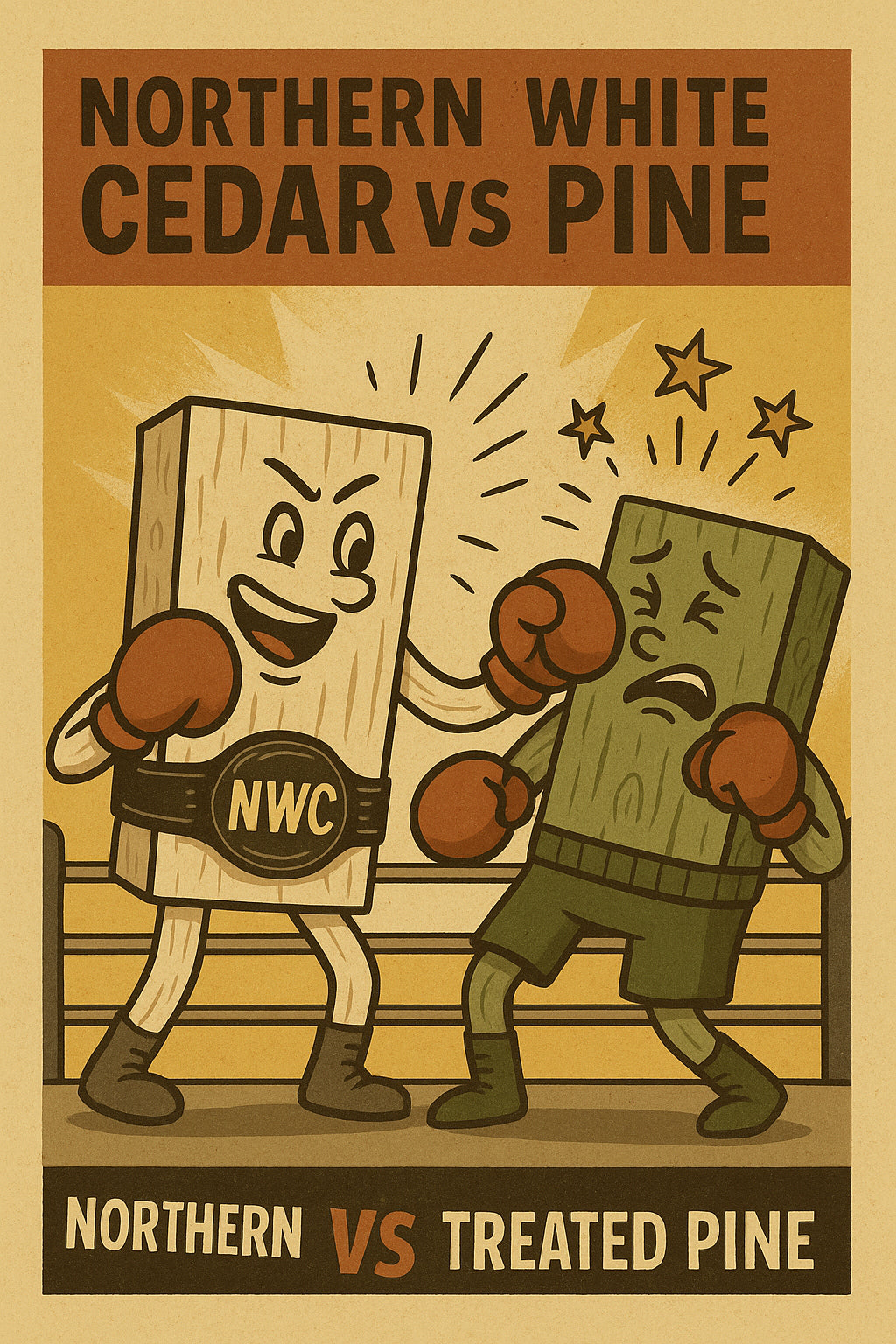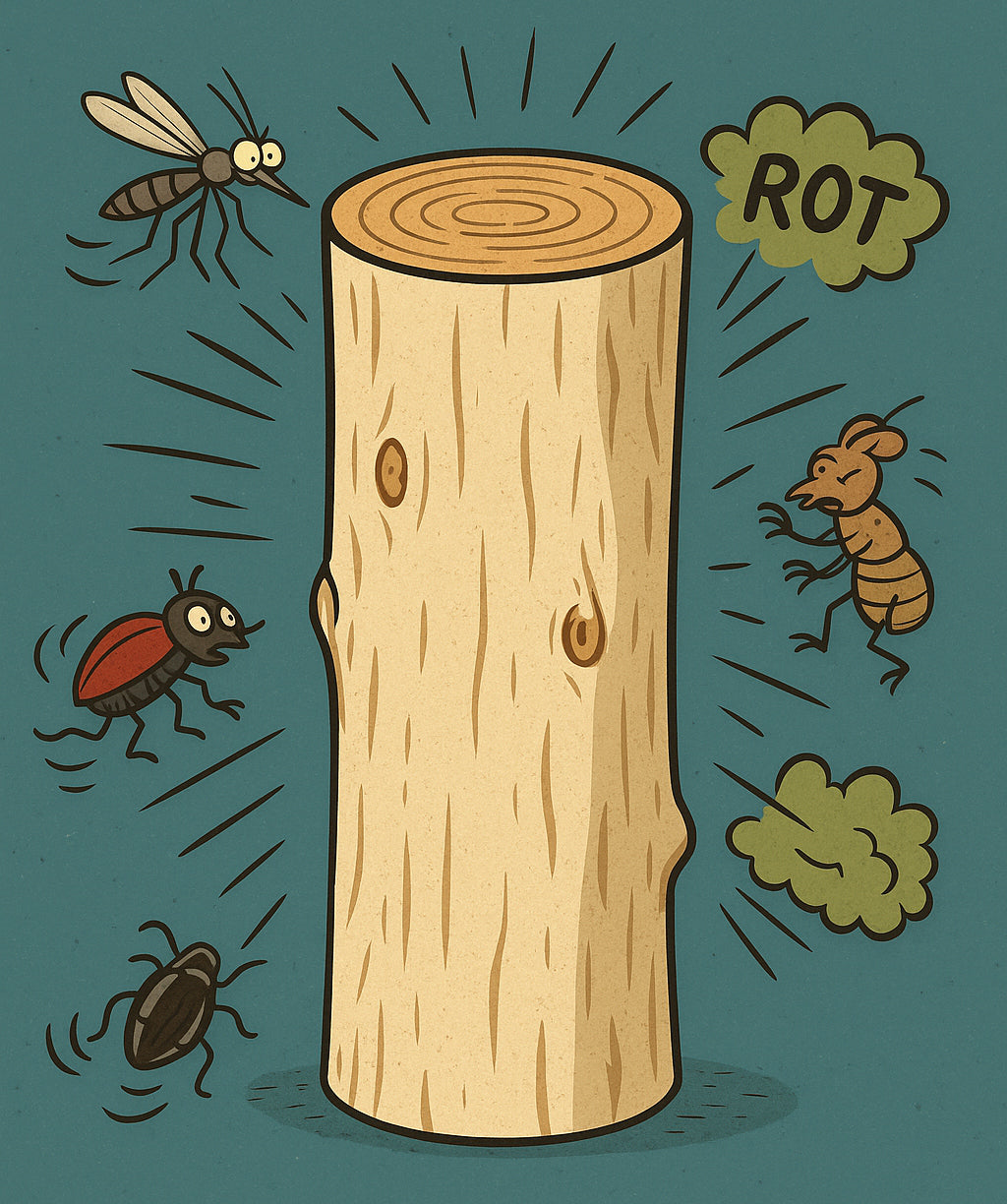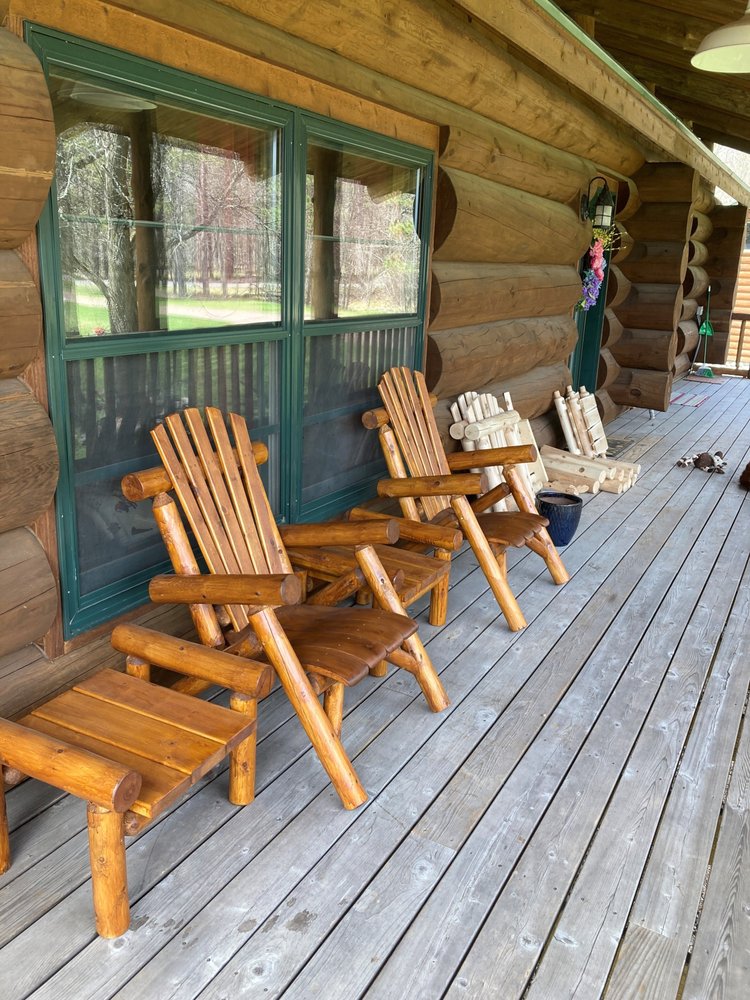When furnishing your patio, you want pieces that are not only stylish but can also withstand the rigors of outdoor life. Two common contenders in the world of outdoor wood furniture are Northern White Cedar and treated pine. While both offer affordability compared to some exotic hardwoods, the similarities largely end there. At Lakeland Mills, we’ve made our choice clear: we champion the natural superiority of Northern White Cedar for its enduring beauty, inherent resilience, and eco-friendly nature. Let's explore why the wood you choose truly matters for your patio and why cedar consistently outperforms treated pine.
The Tale of Two Woods: Natural vs. Chemical
The fundamental difference between Northern White Cedar and treated pine lies in their defense mechanisms against rot and insects.
-
Northern White Cedar: Nature's Fortification: As discussed in our previous blog (The Natural Rot and Insect Resistance of Cedar, Explained), Northern White Cedar boasts naturally occurring compounds like thujaplicins and aromatic oils. These act as built-in preservatives, effectively deterring rot-causing fungi and wood-boring insects without the need for chemical intervention. This inherent resistance is a hallmark of quality American-made log furniture like ours.
-
Treated Pine: Chemical Reliance: Treated pine, on the other hand, is typically a softer, less naturally durable wood (like Southern Yellow Pine) that undergoes a pressure-treating process. This involves forcing chemical preservatives deep into the wood to make it resistant to rot, decay, and insect attack. Common chemicals used include alkaline copper quaternary (ACQ) or copper azole.
Longevity and Durability: The Long-Term Investment
When considering your patio, long-term value is key:
-
Cedar's Enduring Lifespan: In our Michigan climate, unfinished Northern White Cedar log furniture from Lakeland Mills averages a lifespan of 15 years outdoors. With proper care and a good quality finish, this can be extended significantly. Its natural stability also means less warping and cracking over time.
-
Treated Pine's Potential Pitfalls: While the chemical treatment extends pine's lifespan compared to untreated pine, the effectiveness can diminish over time, especially if the wood is repeatedly cut or scratched, exposing untreated areas. Furthermore, the softer nature of pine makes it more susceptible to dents, scratches, and general wear and tear than the more resilient cedar.
Environmental Impact and Safety: A Greener Choice
For the environmentally conscious consumer, the choice is clear:
-
Cedar: Sustainable and Natural: Northern White Cedar, especially when sourced responsibly (like our use of leftover tree tops and local Amish-milled lumber), is a sustainable resource. Its natural resistance eliminates the need for harmful chemicals in the wood itself. It's a truly eco-friendly option for your rustic furniture.
-
Treated Pine: Chemical Concerns: The chemicals used in treated pine raise environmental and safety concerns. Disposal can be problematic as the treated wood should not be burned or used in compost. There are also potential concerns about the leaching of chemicals into the surrounding soil and water over time, although modern treatments are generally considered safer than older formulations. Handling treated pine during assembly can also require precautions like wearing gloves and masks.
Aesthetics and Feel: Natural Beauty Wins
Your patio furniture should be inviting and enhance your outdoor space:
-
Cedar's Natural Charm: Northern White Cedar offers a beautiful, natural aesthetic with its light color, unique grain patterns, and characteristic knots. It ages gracefully to a silver-gray patina if left unfinished, adding to its rustic charm. It's the perfect material for creating inviting cedar log swings, adirondack chairs, and cedar picnic tables.
-
Treated Pine's Less Distinctive Look: Treated pine often has a greenish or brownish tint from the chemicals and lacks the natural beauty and character of cedar. While it can be stained or painted, it doesn't possess the inherent warmth and appeal of natural cedar.
Cost Considerations: Beyond the Initial Price Tag
While treated pine often has a lower initial cost, consider the long-term implications:
-
Cedar: Value Over Time: The superior durability and longevity of Northern White Cedar mean less need for replacement, ultimately saving you money in the long run. Its natural resistance also reduces maintenance costs associated with frequent sealing or treating. Investing in quality American-made log furniture from cedar is a wise long-term investment.
-
Treated Pine: Potential for Higher Long-Term Costs: The shorter lifespan and potential for more frequent repairs or replacement of treated pine furniture can negate its initial lower cost.
The Lakeland Mills Commitment: Naturally Superior Cedar
At Lakeland Mills, our commitment to quality and sustainability leads us to choose Northern White Cedar for the majority of our outdoor log furniture. We believe in providing our customers with rustic furniture that is not only beautiful and comfortable but also built to last naturally, without the reliance on harsh chemicals.
When you're choosing furniture for your patio, consider the long-term value, environmental impact, and the inherent beauty of the materials. Time and again, Northern White Cedar proves to be the superior choice over treated pine, offering a natural, durable, and beautiful foundation for your outdoor living space. Explore our collection of cedar log swings, log gliders, cedar picnic tables, and more at lakelandmills.com and experience the enduring difference of naturally superior wood.




Leave a comment
This site is protected by hCaptcha and the hCaptcha Privacy Policy and Terms of Service apply.